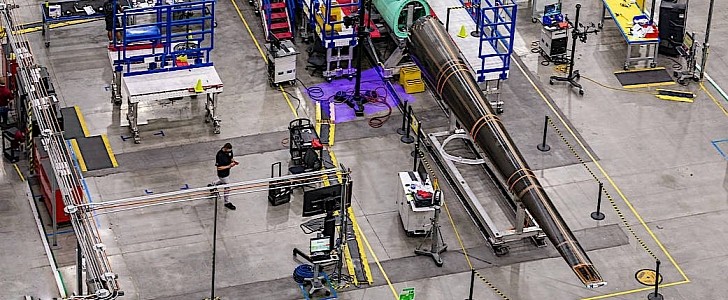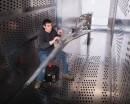It’s been more than two years now since NASA and Lockheed Martin started work on the X-59 Quiet SuperSonic Technology (QueSST) aircraft, and we’re already beginning to see the thing come together in real life, not only as a simulation on a computer.
Not long ago, the space agency released a time-lapse video covering in under a minute more than a year of hard work at Lockheed Martin’s Skunk Works. That's the same group that brought us over the years hits like the SR-71 Blackbird, the F-117 Nighthawk, and, of course, the F-22 Raptor.
The QueSST in itself is a demonstrator, one NASA will be using to show the world and the big bad FAA that supersonic flight over land is possible, and will not make sensitive civilians’ ears bleed when passing through the sound barrier.
Coming to the world in a delta-wing configuration, the airplane is supposed to validate the technologies needed to make a supersonic aircraft quiet enough to be used over populated areas.
The prototype comes with no windows, not even a front one through which the pilot to look through, and that’s because of the 30-foot-long (9-meter) nose needed for the machine to do its thing.
You can see how massive the nose is in the main photo of this piece, released this week by NASA. The body part is presently being removed from the rest of the aircraft, as it will have to be shipped to Fort Worth, Texas, “where it will undergo additional testing.”
Engineers plan to have the X-59 ready sometime soon, as they plan to have it flying over American cities and see how much noise it makes when going supersonic. The pilot will see the exterior of the airplane through a 4K monitor that’s being fed images captured with exterior cameras.
The plane is supposed to fly at Mach 1.4 (1,100 mph/1,770 km/h), twice the speed of today’s commercial airliners and close to the maximum speed achieved by the Concorde. All while reducing to sonic boom to 60 dB (the volume you get in an average conversation), from the 90 dB the Concorde hit.
The QueSST in itself is a demonstrator, one NASA will be using to show the world and the big bad FAA that supersonic flight over land is possible, and will not make sensitive civilians’ ears bleed when passing through the sound barrier.
Coming to the world in a delta-wing configuration, the airplane is supposed to validate the technologies needed to make a supersonic aircraft quiet enough to be used over populated areas.
The prototype comes with no windows, not even a front one through which the pilot to look through, and that’s because of the 30-foot-long (9-meter) nose needed for the machine to do its thing.
You can see how massive the nose is in the main photo of this piece, released this week by NASA. The body part is presently being removed from the rest of the aircraft, as it will have to be shipped to Fort Worth, Texas, “where it will undergo additional testing.”
Engineers plan to have the X-59 ready sometime soon, as they plan to have it flying over American cities and see how much noise it makes when going supersonic. The pilot will see the exterior of the airplane through a 4K monitor that’s being fed images captured with exterior cameras.
The plane is supposed to fly at Mach 1.4 (1,100 mph/1,770 km/h), twice the speed of today’s commercial airliners and close to the maximum speed achieved by the Concorde. All while reducing to sonic boom to 60 dB (the volume you get in an average conversation), from the 90 dB the Concorde hit.







